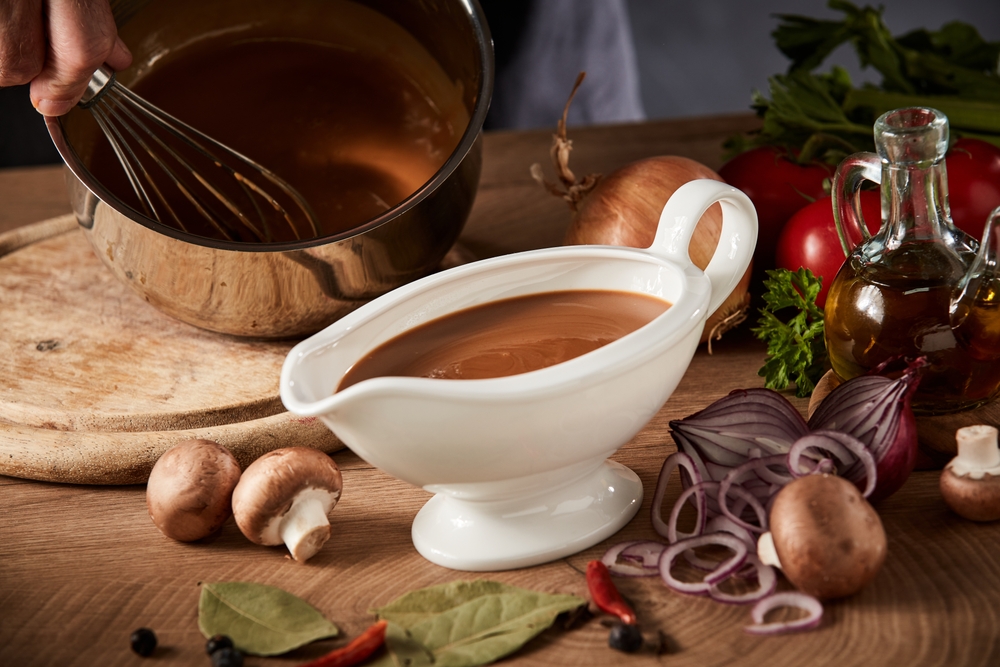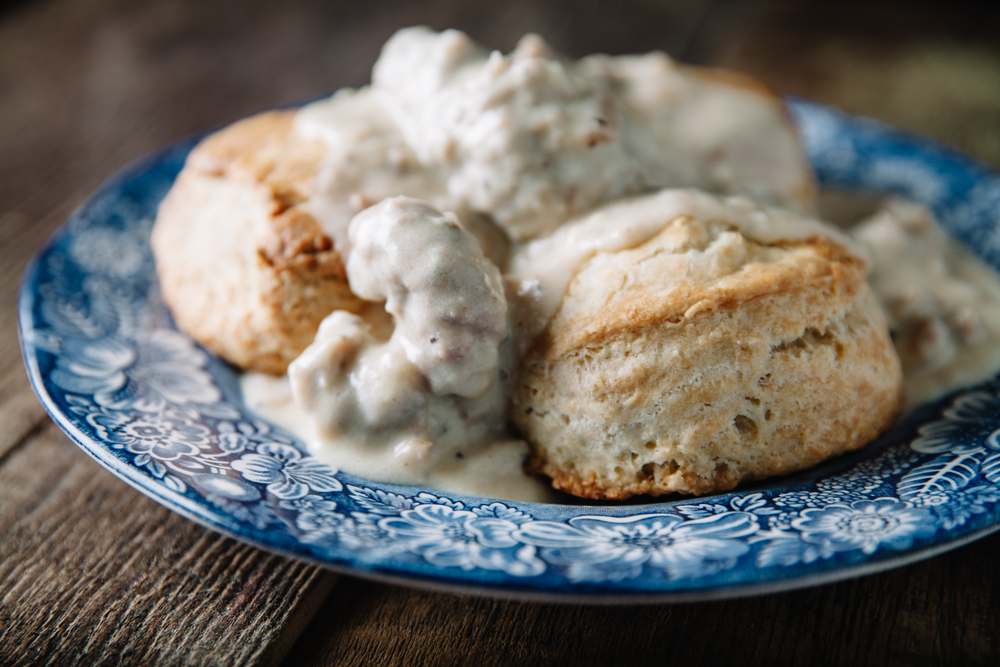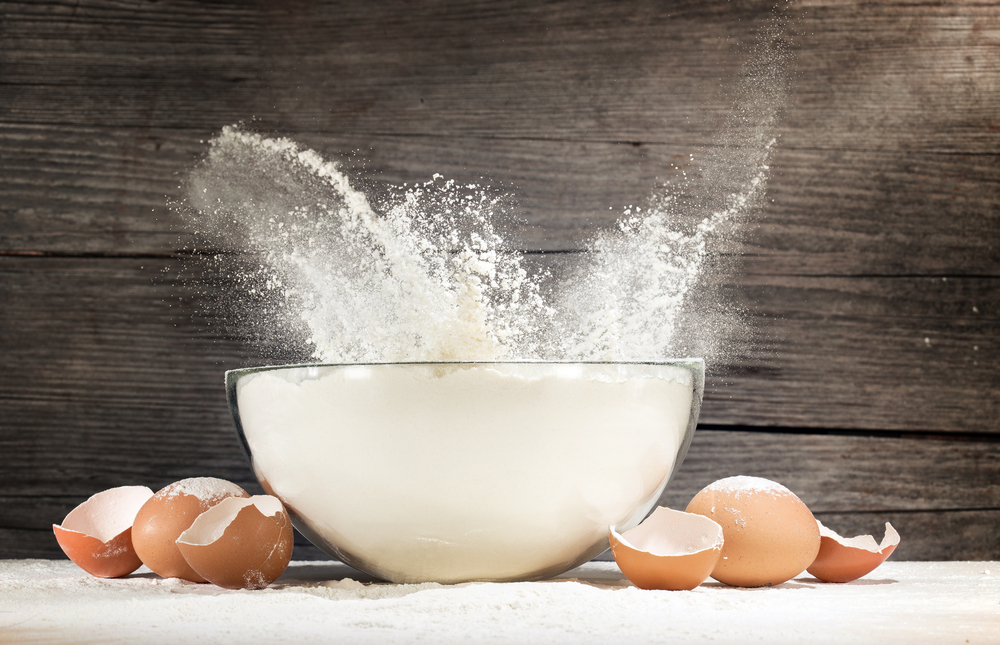As a classic British dish, Yorkshire pudding is a staple in many households. But for those who have never tasted it, the question remains: what does Yorkshire pudding taste like?
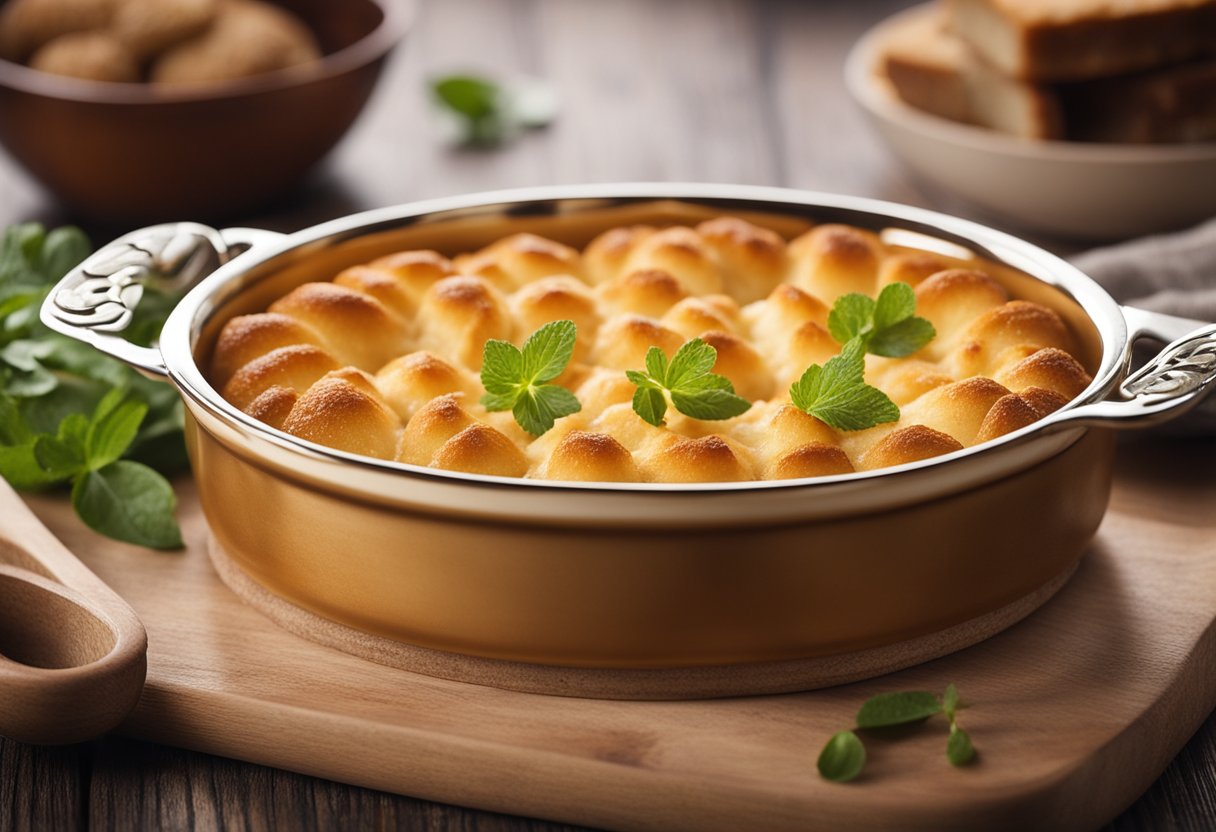
The answer is that Yorkshire pudding has a mild, savory flavor with a slightly eggy taste. It is typically made with flour, milk, eggs, and salt, and baked in the drippings of meat. The result is a crispy exterior with a soft and chewy interior.
While Yorkshire pudding is often served alongside roast beef and gravy, it can also be enjoyed on its own or with other meats and vegetables.
With its simple yet delicious taste, it’s no wonder that Yorkshire pudding has been a beloved dish for generations.
Key Takeaways
- Yorkshire pudding has a mild, savory flavor with a slightly eggy taste and a crispy exterior with a soft and chewy interior.
- It is typically made with flour, milk, eggs, and salt, and baked in the drippings of meat.
- Yorkshire pudding is often served alongside roast beef and gravy, but can also be enjoyed on its own or with other meats and vegetables.
What Is Yorkshire Pudding
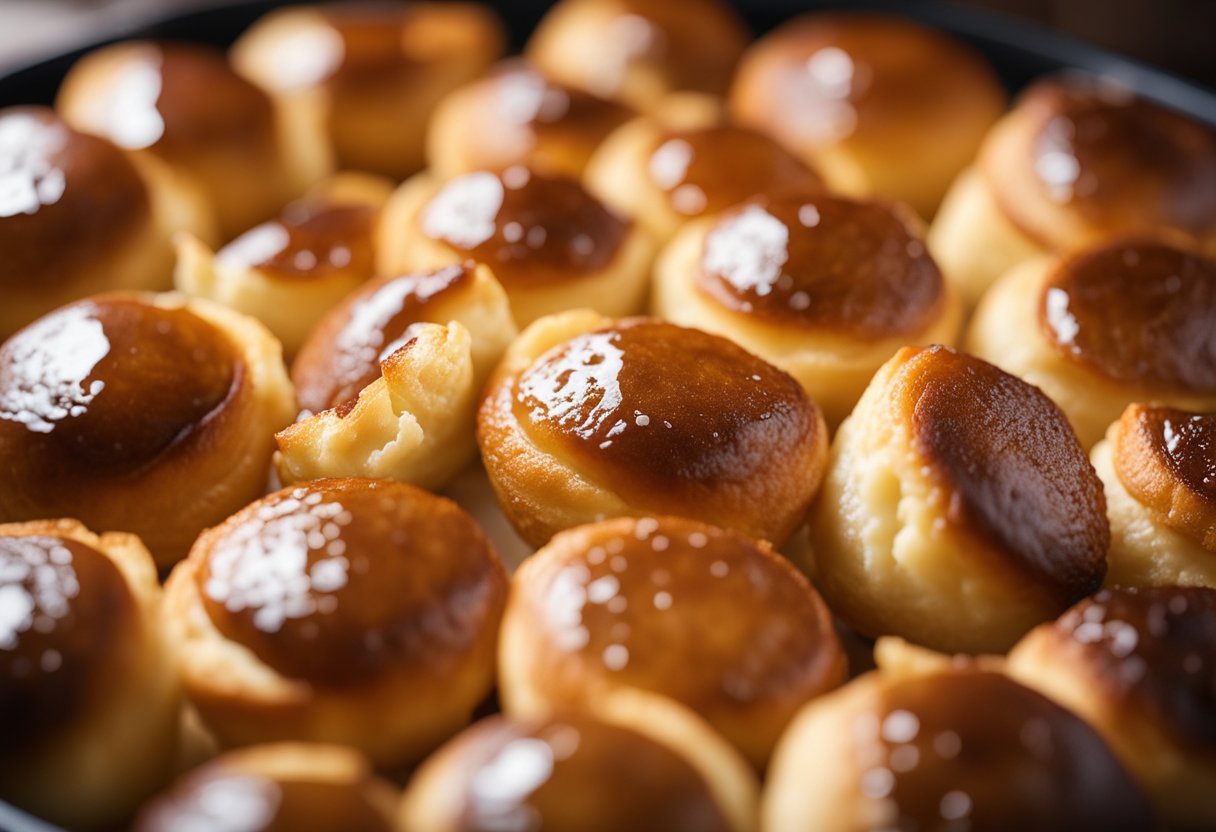
As someone who has grown up in England, I can confidently say that Yorkshire pudding is a staple side dish in a traditional roast dinner.
It is an accompaniment that is loved by many and is often served with gravy, vegetables, and meat. Yorkshire pudding is a dish that is simple to make and has been enjoyed for generations.
Yorkshire pudding is often described as a type of popover, which is a light, fluffy pastry that is made from an egg batter.
The dish is made from a mixture of flour, eggs, milk, and salt, and traditionally baked in the drippings of the meat. This gives it a rich and savory flavor that is hard to resist.
The origins of Yorkshire pudding are not entirely clear, but it is believed to have originated in Yorkshire, England, hence the name.
It was originally served as a starter before the main course and was made from the batter that was left over from making a roast.
Over time, it became a popular side dish and is now a staple of the traditional Sunday roast dinner.
In fact, Yorkshire pudding is so beloved in England that it even has its own holiday, Yorkshire Pudding Day, which is celebrated on the first Sunday of February.
On this day, people across the country celebrate the dish by making and eating it with their loved ones.
Overall, Yorkshire pudding is a simple yet delicious dish that has been enjoyed for generations. Its origins may be unclear, but its popularity is undeniable.
Whether you are enjoying it as part of a traditional roast dinner or on its own, Yorkshire pudding is sure to satisfy your taste buds.
Ingredients of Yorkshire Pudding
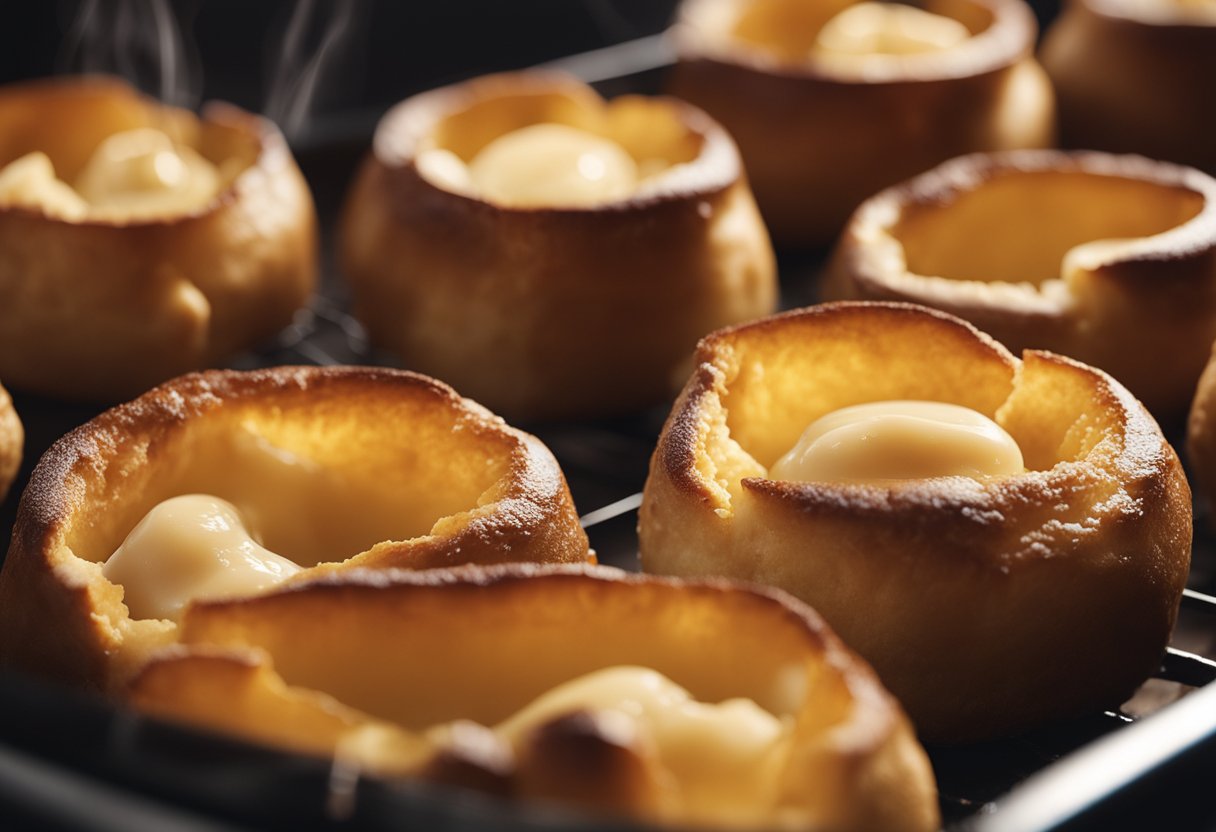
As a food lover, I have always been fascinated by the simplicity and deliciousness of Yorkshire pudding. The main ingredients of Yorkshire pudding are flour, milk, eggs, and salt.
This creates a batter that is then traditionally baked in the drippings of your meat.
The batter is made by whisking together eggs, flour, and milk until it is smooth and lump-free. Some recipes also call for the addition of butter, which can add richness to the finished pudding.
For those who prefer a meatier flavor, beef dripping can be used instead of butter.
All-purpose flour is the most commonly used flour in Yorkshire pudding recipes. It is important to use a good quality flour to ensure that the batter rises properly. Kosher salt is often used to season the batter.
The main ingredients of Yorkshire pudding are mixed together to form a batter that is then poured into a hot baking dish.
The batter rises and becomes crispy on the outside while remaining moist on the inside due to the eggs whisked into the batter before cooking.
Overall, the ingredients of Yorkshire pudding are simple, yet they come together to create a delicious and satisfying dish.
The combination of flour, milk, eggs, and salt creates a batter that is both savory and satisfying.
Cooking Method for Yorkshire Pudding
When it comes to cooking Yorkshire Pudding, there are a few key steps to follow to ensure success. Here’s how I do it:
Preheat the Oven
I start by preheating the oven to a high temperature, usually around 220°C (425°F).
Prepare the Pan
Next, I prepare the pan. Traditionally, Yorkshire Pudding is cooked in a pan that has been greased with beef fat. However, vegetable oil can also be used if you prefer.
I make sure to heat the fat or oil in the pan until it’s hot and sizzling before adding the batter.
Make the Batter
To make the batter, I mix together flour, eggs, milk, and salt until smooth. Some recipes call for resting the batter for an hour before cooking, but I find that this step isn’t always necessary.
Cook the Pudding
Once the pan is hot, I pour in the batter and place it in the preheated oven. It’s important not to open the oven door while the pudding is cooking, as this can cause it to collapse.
I usually cook the pudding for around 20 minutes, or until it has risen and turned golden brown.
Rest the Pudding
Once the pudding is cooked, I remove it from the oven and let it rest for a few minutes before serving. This allows the pudding to crisp up slightly and makes it easier to remove from the pan.
Alternative Cooking Methods
While cooking Yorkshire Pudding in a pan is the traditional method, it’s also possible to use a muffin tin or a special Yorkshire Pudding tin.
These can be greased with either beef fat or vegetable oil and filled with batter before cooking in the oven.
Steam
Another technique for cooking Yorkshire Pudding is to use steam. This involves placing the batter in a pan of boiling water and steaming it until it rises and sets.
However, this method can be tricky to master and is not as commonly used as the traditional oven method.
Overall, cooking Yorkshire Pudding is a straightforward process that requires a few key steps to ensure success.
By following these steps and experimenting with different fats and cooking methods, you can create a delicious and crispy pudding that’s perfect for any occasion.
Taste and Texture of Yorkshire Pudding

Yorkshire pudding is a traditional British dish that is often served with roast beef and gravy. It is a savory type of popover that is made from a simple batter of flour, eggs, and milk.
The taste and texture of Yorkshire pudding can vary depending on the cook, but there are some general characteristics that are common to most recipes.
One of the defining features of Yorkshire pudding is its crispy exterior. When cooked properly, the outside of the pudding should be golden brown and crispy, while the inside remains moist and eggy.
The texture of Yorkshire pudding is also unique, with a soft and chewy interior that is slightly taller than a traditional pancake.
In terms of flavor, Yorkshire pudding is not particularly sweet or savory. It has a mild taste that is slightly eggy and slightly salty.
The batter is usually seasoned with a pinch of salt, which helps to enhance the flavor of the dish. When served with roast beef and gravy, the pudding helps to soak up the juices and adds a satisfying texture to the meal.
While some recipes may call for additional ingredients like sugar or butter, these additions are not necessary to achieve the classic taste and texture of Yorkshire pudding.
The simplicity of the dish is part of its charm, and it is a perfect complement to a hearty roast dinner.
Overall, the taste and texture of Yorkshire pudding are unique and delicious. Whether you are a fan of savory dishes or have a sweet tooth, this traditional British dish is sure to please.
Variations and Serving Suggestions
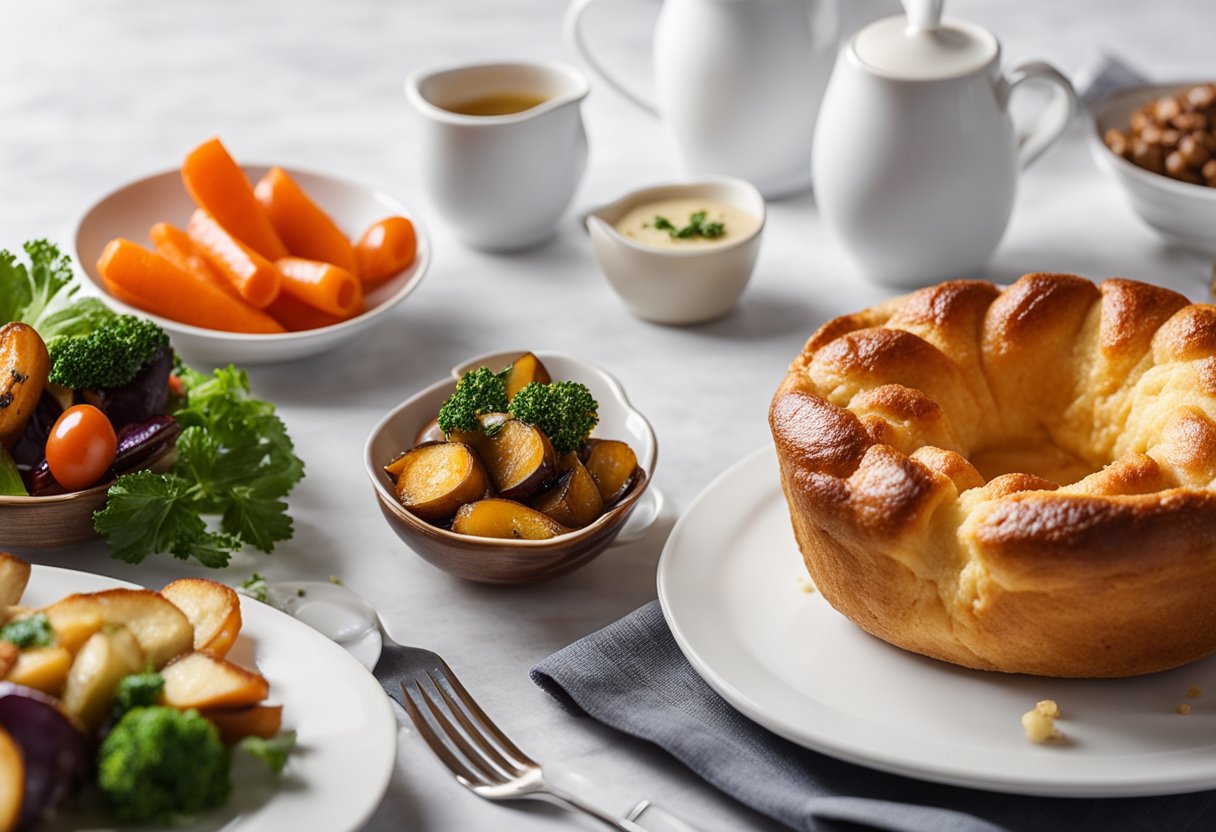
As I mentioned earlier, Yorkshire pudding is a versatile dish that can be served in many ways. Here are some variations and serving suggestions that you can try:
- Sunday Roast: Traditionally, Yorkshire pudding is served with roast beef and gravy as part of a Sunday roast. The meat drippings from the roast are used to make the pudding, giving it a rich and savory flavor that complements the beef perfectly.
- Appetizer: Yorkshire pudding can also be served as an appetizer. Cut the pudding into small pieces and serve with a variety of sauces, such as aioli, horseradish, or mustard. You can also top the pudding with bacon, onions, or herbs to add extra flavor.
- Wrap: Another way to serve Yorkshire pudding is to use it as a wrap. Fill the pudding with roasted vegetables, potatoes, or meats, and wrap it up like a burrito. This is a great way to use up leftovers and create a delicious and filling meal.
- Dessert: Although Yorkshire pudding is typically served as a savory dish, it can also be used to make a sweet dessert. Fill the pudding with cream and top with fresh berries or fruit compote. You can also add a sprinkle of sugar or cinnamon for extra sweetness.
- Toad in the Hole: Toad in the hole is a classic British dish that consists of sausages baked in Yorkshire pudding batter. This hearty and filling meal is perfect for a cold winter’s day and can be served with peas and gravy.
- Bangers and Mash: Bangers and mash is another classic British dish that can be served with Yorkshire pudding. The pudding is used to soak up the gravy from the sausages and mashed potatoes, adding an extra layer of flavor to the dish.
- Dutch Baby Pancakes: Yorkshire pudding is similar to Dutch baby pancakes, which are sweet pancakes that are baked in the oven. You can use the same batter to make both dishes, and the result is a light and fluffy pancake that can be served with a variety of toppings.
- Salty or Herby: The taste of Yorkshire pudding is slightly eggy and slightly salty, with a crisp exterior and a soft, chewy interior. You can also add herbs such as rosemary or thyme to the batter to give it extra flavor.
In conclusion, Yorkshire pudding is a delicious and versatile dish that can be served in many ways. Whether you prefer it as a side dish with roast beef and gravy or as a sweet dessert with cream and fruit, the possibilities are endless.
Experiment with different variations and serving suggestions to find your favorite way to enjoy this classic British dish.
Nutritional Information

As a food, Yorkshire Pudding is generally high in calories and fat. However, the nutritional value of this dish can vary depending on how it is prepared and served.
Here is a breakdown of the nutritional information for Yorkshire Pudding:
- Calories: On average, a single serving of Yorkshire Pudding contains around 150-200 calories. This may vary depending on the size of the serving and the ingredients used.
- Saturated Fat: Yorkshire Pudding is traditionally made with whole milk, which can be high in saturated fat. A single serving of Yorkshire Pudding can contain up to 6 grams of saturated fat.
- Carbohydrates: Yorkshire Pudding is a carbohydrate-rich food, with each serving containing around 20-30 grams of carbohydrates.
- Protein: Yorkshire Pudding is not a significant source of protein, with each serving containing only around 3-4 grams of protein.
- Sodium: Depending on the recipe, a single serving of Yorkshire Pudding can contain up to 500 milligrams of sodium.
- Dietary Fiber: Yorkshire Pudding is not a significant source of dietary fiber, with each serving containing only around 1 gram of fiber.
- Cholesterol: Yorkshire Pudding can be high in cholesterol, with each serving containing up to 60 milligrams of cholesterol.
While Yorkshire Pudding may not be the healthiest food option, it can still be enjoyed in moderation as part of a balanced diet.
If you are looking to reduce the calorie and fat content of this dish, consider using low-fat milk and baking the pudding in a muffin tin instead of a large baking dish.
Additionally, serving Yorkshire Pudding with a side of vegetables can help to balance out the nutritional value of the meal.
History and Trivia
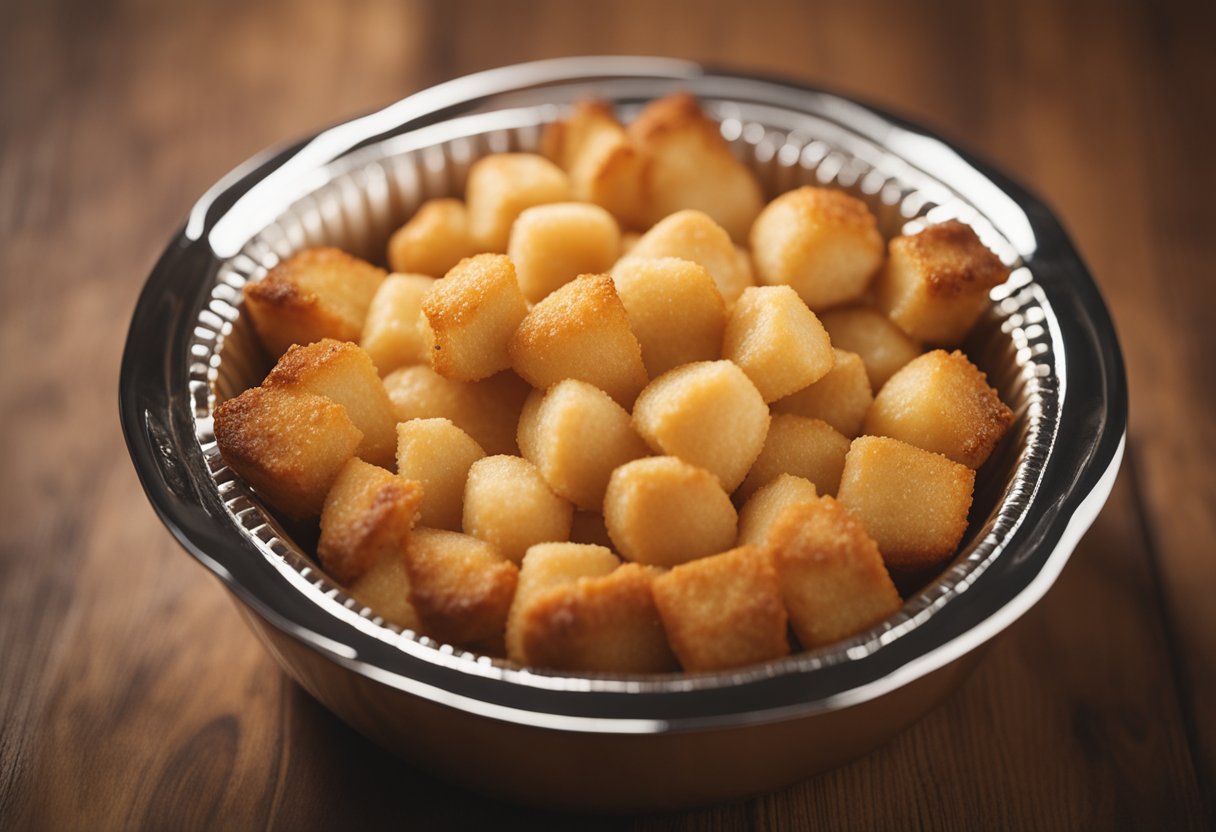
As a lover of traditional British cuisine, I find it fascinating to learn about the history and trivia behind Yorkshire pudding.
The origins of this savory dish are somewhat of a mystery, but it is believed to have been around since the 1700s.
One of the earliest references to Yorkshire pudding can be found in a cookbook by Hannah Glasse, titled “The Art of Cookery Made Plain and Simple,” which was published in 1747.
Interestingly, Yorkshire pudding was not always served as a side dish to roast beef. In fact, it was originally served as a separate course before the main meal, often with gravy or golden syrup.
It wasn’t until the 1800s that it became a popular accompaniment to roast beef, where it is now commonly served to soak up the meat juices.
Yorkshire pudding is similar to popovers, which are a type of American pastry. Both are made from a simple batter of flour, eggs, and milk, and are baked until they rise and become crispy on the outside.
However, Yorkshire pudding is typically served as a savory dish, while popovers are often sweet and served with ice cream.
On July 14th, Yorkshire pudding even has its own special day, known as Yorkshire Pudding Day.
It is celebrated in the UK and around the world, with many restaurants and home cooks serving up their own variations of this classic dish.
When it comes to flavor, Yorkshire pudding is a simple yet delicious dish. It has a slightly crispy exterior and a soft, creamy interior, with a subtle flavor that pairs well with a variety of vegetables and meats.
Some people like to add black pepper or other seasonings to the batter for a more robust flavor, but I prefer to keep it simple and let the dish speak for itself.
Leftovers and Storage
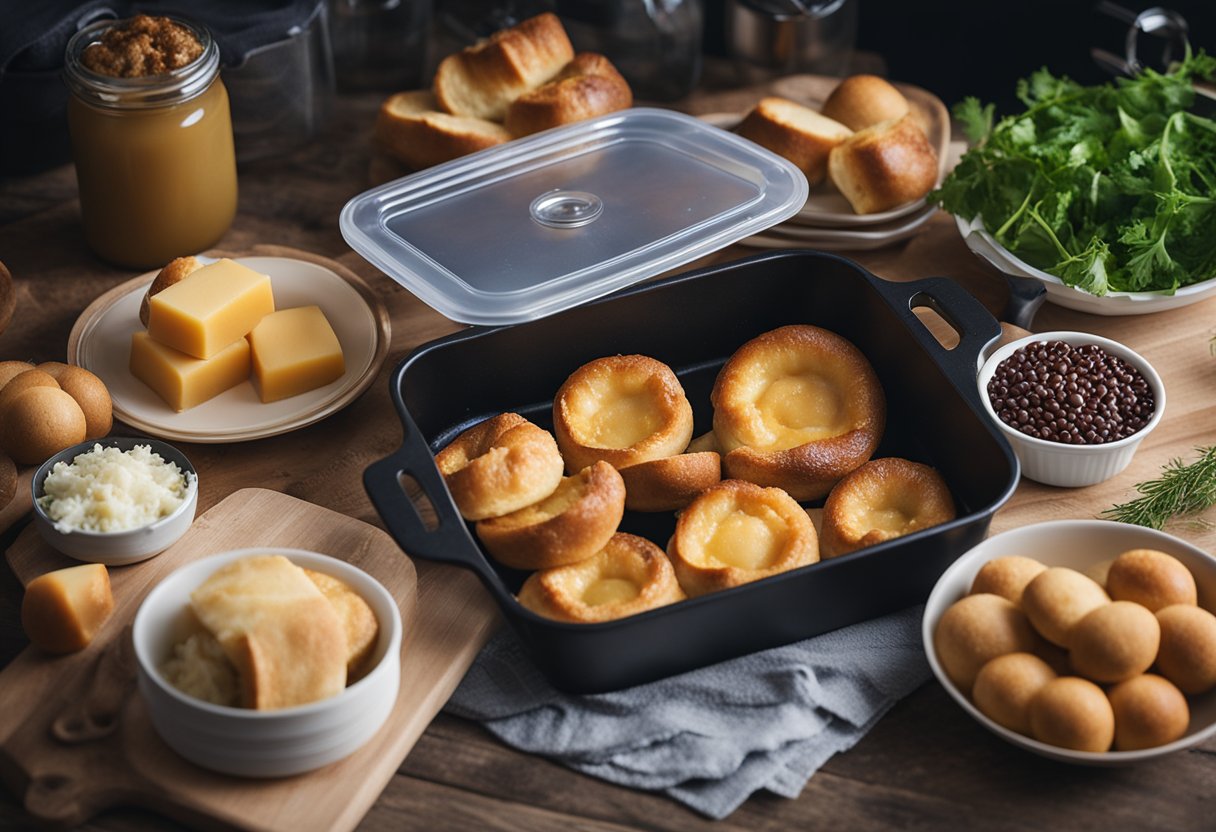
When it comes to Yorkshire pudding, it’s always best to eat it fresh out of the oven. However, if you do have leftovers, you can store them in an airtight container in the refrigerator for up to three days.
To reheat, place the pudding in the oven at 350°F (175°C) for 5-10 minutes or until heated through. You can also reheat it in the microwave, but be aware that the texture may not be as crispy as when it’s freshly made.
If you find yourself with leftover batter, you can also store it in the refrigerator for up to two days. When you’re ready to use it, bring it to room temperature before cooking.
It’s important to note that Yorkshire pudding batter should never be frozen as it can affect the texture and rise of the pudding.
When it comes to making Yorkshire pudding ahead of time, it’s best to make the batter in advance and store it in the refrigerator until you’re ready to use it. This can save time on busy days and ensure that you have fresh pudding when you need it.
Overall, Yorkshire pudding is best enjoyed fresh, but with proper storage and reheating techniques, you can still enjoy the delicious taste even after it’s been made.
Frequently Asked Questions
What is the flavor profile of Yorkshire pudding?
Yorkshire pudding has a savory flavor profile that is slightly eggy and meaty. The batter is seasoned with salt and cooked in meat drippings, which adds to its rich flavor. It is often served with gravy, which complements the flavor of the pudding.
Can Yorkshire pudding be sweet?
No, Yorkshire pudding is not typically sweet. It is a savory dish that is often served as a side dish with a roast dinner.
However, some people have experimented with adding sweet ingredients to the batter, such as sugar or cinnamon, to create a dessert version of the dish.
How does the texture of Yorkshire pudding compare to bread?
The texture of Yorkshire pudding is similar to a popover or a light, airy bread. It has a crispy exterior and a soft, tender center. However, it is not as dense as bread and has a slightly different texture due to the eggs in the batter.
What are some common ingredients in Yorkshire pudding?
The main ingredients in Yorkshire pudding are flour, eggs, milk, and salt. Some recipes may also call for additional ingredients such as baking powder or water.
The pudding is traditionally cooked in meat drippings, but oil or butter can also be used.
What is the history of Yorkshire pudding?
Yorkshire pudding is a traditional English dish that dates back to the 18th century. It was originally served as a starter course to fill up diners before the main meal.
The dish became popular as a side dish to accompany roast beef, and it is now a staple of British cuisine.
Is Yorkshire pudding typically served as a side dish or a dessert?
Yorkshire pudding is typically served as a side dish with a roast dinner. It is often served alongside roast beef, but it can also be served with other meats such as chicken or pork.
While some people have experimented with sweet versions of the dish, it is not traditionally served as a dessert.



